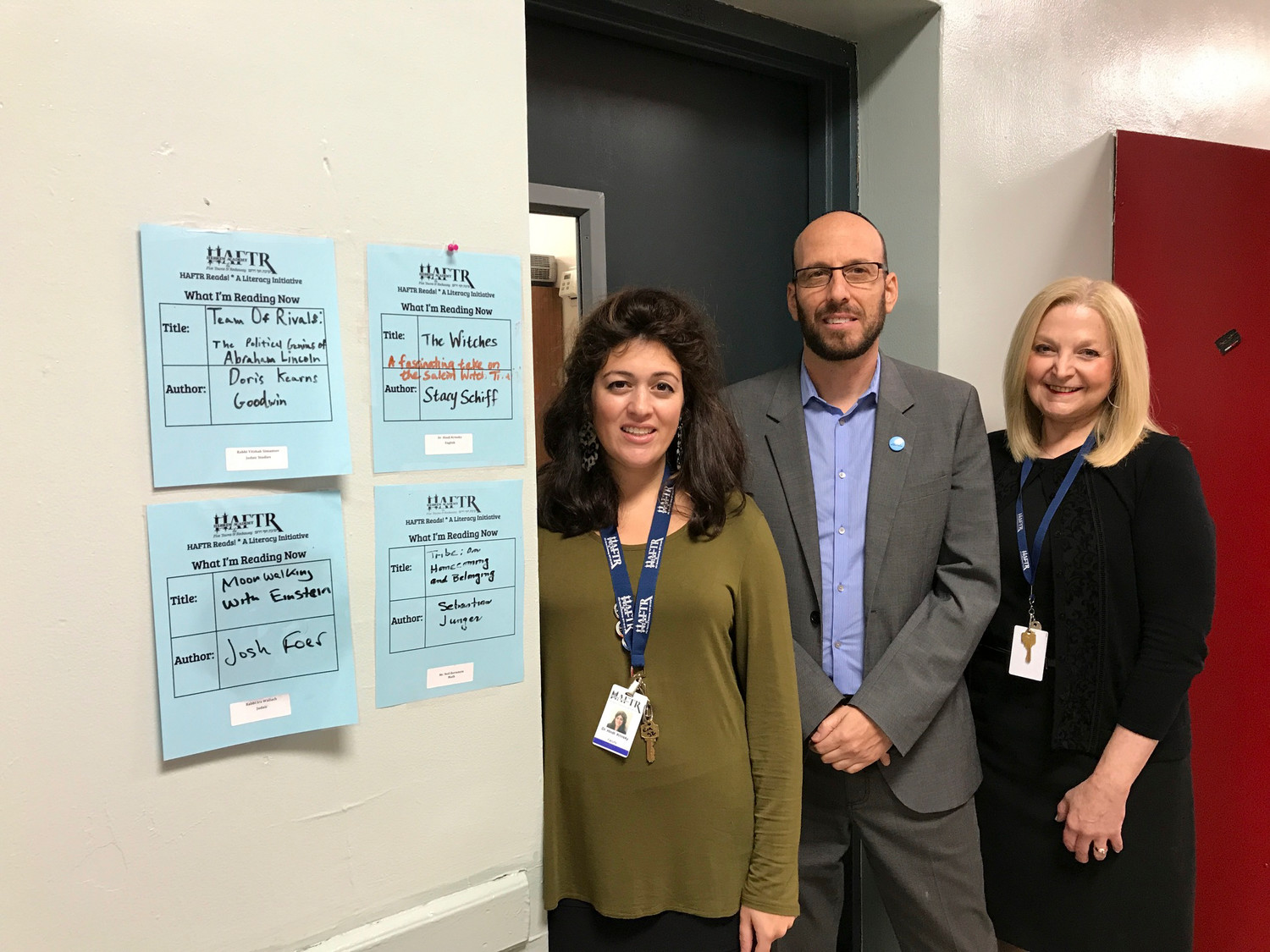Establishing a schoolwide culture
HAFTR High launches literacy initiative
The halls of the Hebrew Academy of the Five Towns and Rockaway High School are metaphorically lined with books. Outside their classrooms and offices, teachers and administrators alike display the titles and names of authors they are reading.
All of this is one part of the school’s new literacy initiative, a multifaceted plan to boost enthusiasm for reading across the school, and as General Studies Principal Naomi Lippman said, “To raise the level of literacy throughout the building.”
Lippman said she wants to ensure that all HAFTR students are prepared to succeed in college when they leave the Cedarhurst school. “Literacy impacts every discipline” — “Accessing text, understanding hidden meanings, appreciating different genres,” she said. “We want students to have these skills and a higher awareness of them.”
Another goal of the initiative is to make sure that students become better readers, more confident writers, articulate speakers and active listeners. HAFTR faculty members believe that students who master those skills will excel in every subject, which is why the school’s educators have students annotate and deconstruct what they are reading.
English teacher and program coordinator Dr. Hindi Krinsky is running workshops with both general and Judaic study teachers. “With social media, kids may be reading more than they were,” Krinsky said, “but not in the ways that we’d like.”
One habit the program is attacking is skimming information, which many young people do using their smartphones. Teaching students to read slowly and thoroughly while highlighting critical information, and then marking questions and noting any bias, is at the forefront of the new program.
Jason Gelman, who teaches social studies to Advanced Placement and Regents students, believes that these skills are particularly useful for his subject. “There are a lot of long documents, especially for A.P. exams,” he said. “Actively engaging the substance of the piece is how you learn.”
Gelman said that one of the most important aspects of this process is identifying the source and any potential biases that the students might have. His classes often rely on primary documents, so he asks students to take the source and the historical era into context before beginning to read. “There’s bias in everything,” he said.
Both Gelman and Krinsky stressed the importance of this skill, both inside the classroom and out. “Ideally, students will extend this habit to all of their media experiences,” Krinsky said, pointing out that many students get their information online, where inaccurate news often proliferates.
Similar techniques have been used at HAFTR in the past, but now they are applied in math and science classes as well as in English and social studies. “Lots of teachers have been doing this for a while. We wanted to spread it across the school,” Krinsky said. “We want to establish a schoolwide vocabulary and culture.”
Teachers have also been trying to tailor their class discussions and group assignments to assist students in speaking, while using podcasts to hone their listening skills.
Gelman said he believes the system is catching on with the students. “My classes have been really open to it. They’re willing to try anything that could help them with their SATs or A.P. exam,” he said.
Gelman, Krinsky and Lippman all said the new program has created a desire to read in both students and teachers. “We found out a gym teacher and a biology teacher have been reading the same book,” an excited Krinsky said. “Fostering a community of readers and writers while getting the building buzzing about reading,” she said, is the initiative’s main goal.
The next step is a schoolwide literary effort in which everyone reads the same book. Krinsky doesn’t think this will begin until winter at the earliest, but she hopes for a successful outcome that could extend out into the community where parents and friends will read a common book with the students and staff.
Lippman said that making students aware that they are using these skills is as important as ensuring that they possess them. She said the initiative has taken hold because of Krinsky’s efforts. “Part of the early success is how much she’s prepared and how enthusiastic she’s gotten the staff,” Lippman said. “I believe this will impact every single student.”






